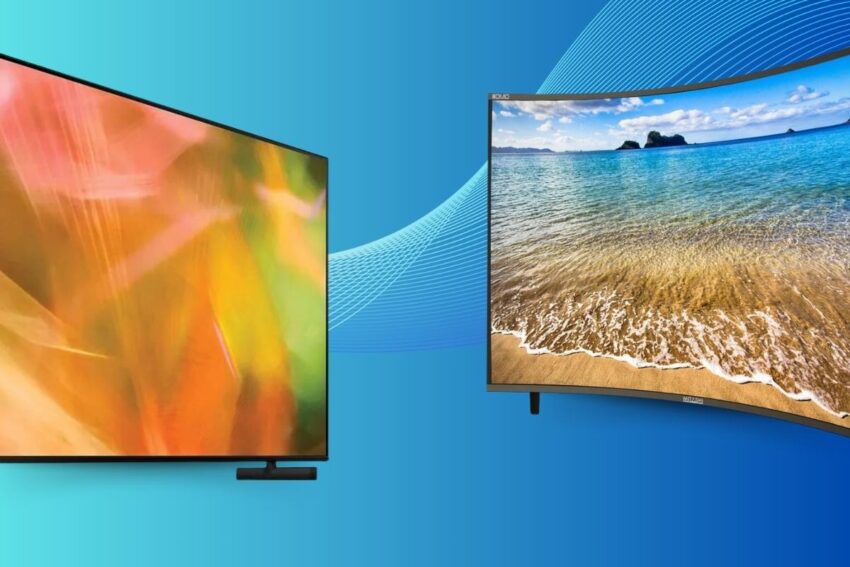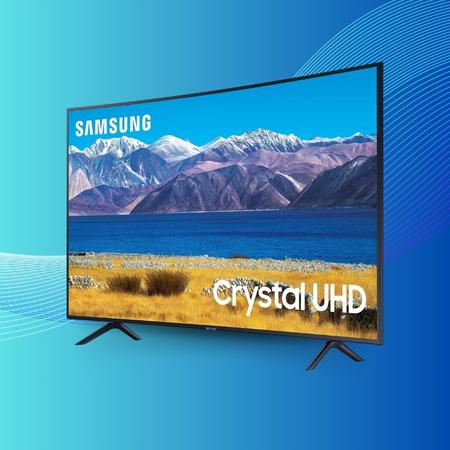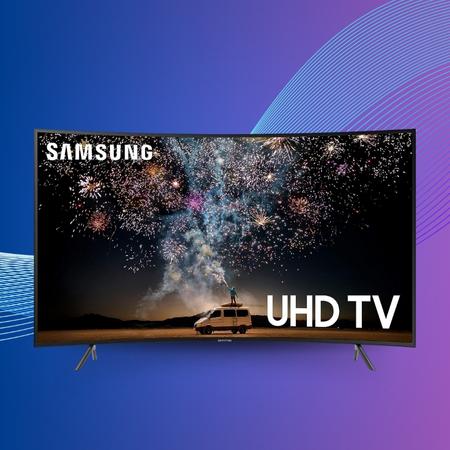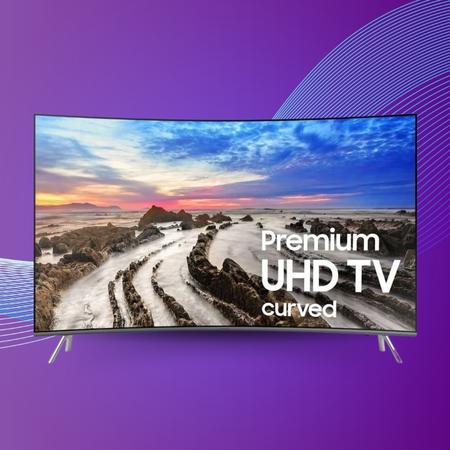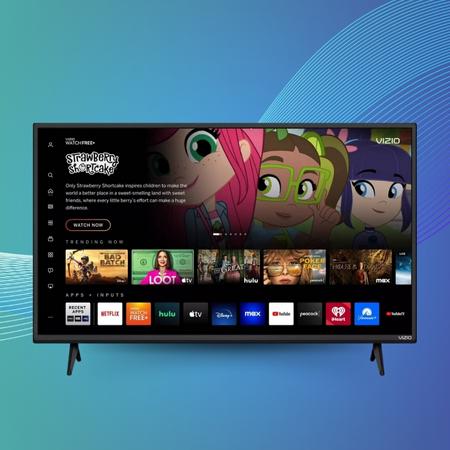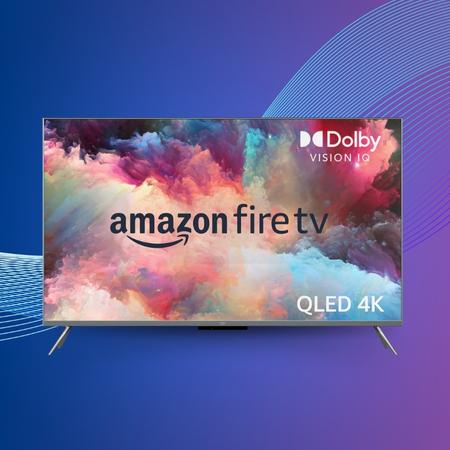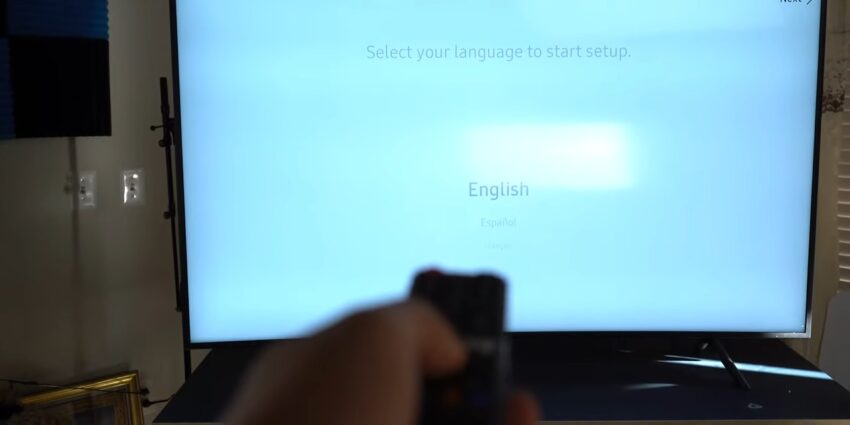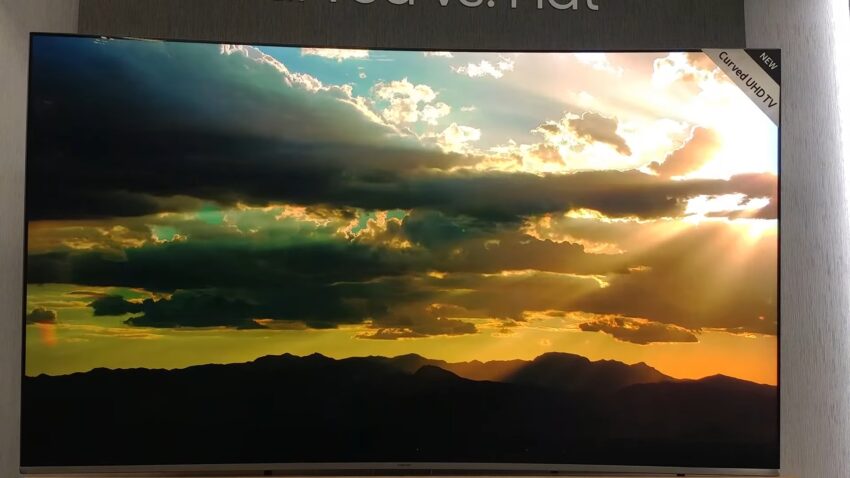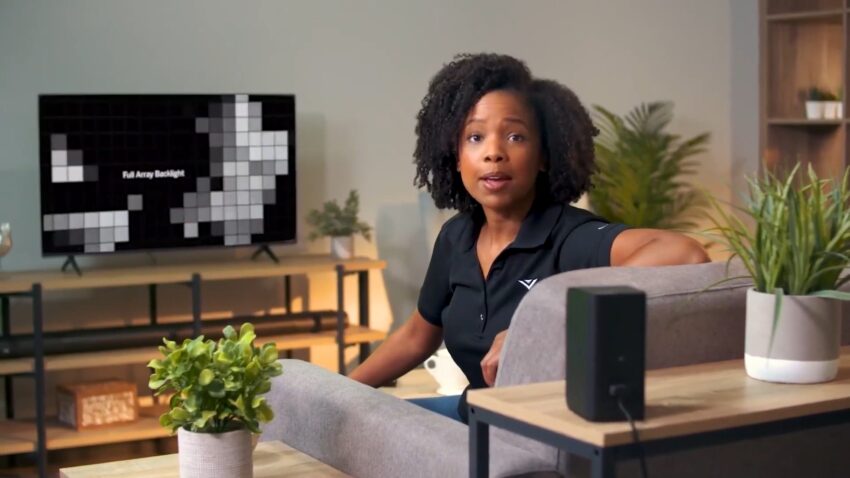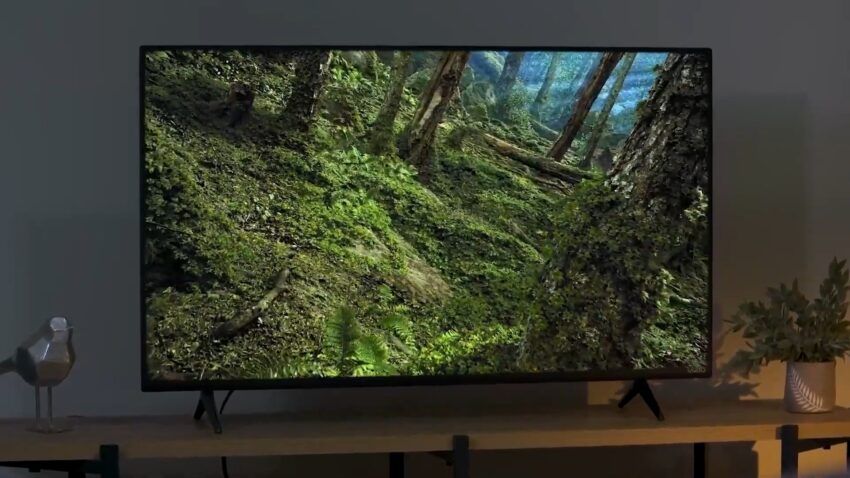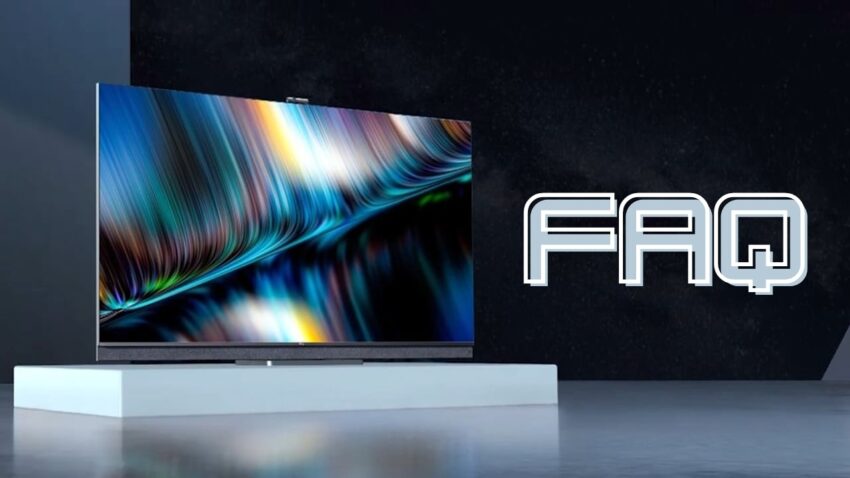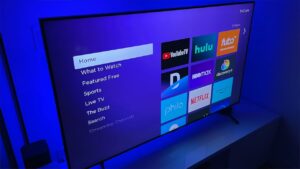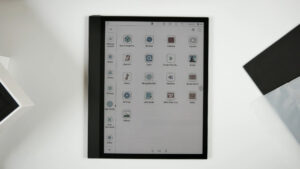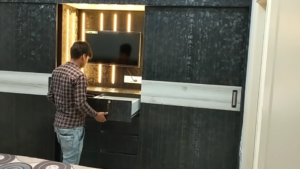A few years ago, there was a strong push for curved TVs, with the strong implication that they were revolutionary, and because of this, they were almost always sold at a premium.
The biggest point is that a curved screen is a more normal form to take advantage of the peripheral vision of our eyes. This means curved televisions allow for more interactive viewing because they help them fill our field of view better and offer a wider viewing angle.
Nowadays, curved TVs are not always a premium and we can find them at all price ranges. So now begs the question, is it worth investing in a curved TV all things considered?
| Flat | Curved | |
| Viewing angle: | Decent | Decent |
| Immersiveness: | Good | Better |
| Reflections: | Good | Good |
| Cost: | Every price range | More Premium models |
| Availability: | Abundant | Common |
Top Curved TVs
SAMSUNG 55-inch Class Curved UHD TU-8300 Series
The SAMSUNG 55-inch Curved TU-8300 TV offers a stunning 4K UHD resolution with its advanced Crystal Processor. Its unique curved screen design ensures immersive viewing, while the built-in internet services provide endless entertainment options.
| Feature | Specification |
|---|---|
| Display Technology | Crystal Processor 4K |
| Resolution | 4K UHD 3840 x 2160 |
| Special Feature | Curved Screen |
| Supported Internet Services | Netflix, HBO Now, Hulu, CBS, Amazon Instant Video |
| Product Dimensions | 48.7 x 10.4 x 31.1 inches |
- Advanced Crystal Processor ensures sharp and clear visuals
- Wide range of built-in internet services for diverse entertainment
- Sleek and modern design complements any room setting
- TV will randomly shut off
Samsung UN55RU7300FXZA Curved 55-Inch
It boasts a powerful 4K UHD processor that optimizes performance, and with its HDR capabilities, it reveals shades of color that conventional HDTVs can’t. The curved design ensures an immersive viewing experience, pulling you into the action.
| Feature | Specification |
|---|---|
| Display Technology | LED |
| Resolution | 4K |
| Special Feature | 4K UHD Processor; HDR; Smart TV with Universal Guide; Curved Slim Design; PurColor |
| Supported Internet Services | Netflix, Hulu, Amazon Instant Video, Browser |
| Product Dimensions | 10.3″D x 48.7″W x 31.2″H |
- Smart TV features include a universal guide for easy content discovery.
- Compatible with both Alexa and Google Assistant for voice control.
- Enhanced detail with HDR offers a depth of detail that surpasses standard HDTVs.
- Wifi issues
Samsung Electronics UN65MU8500 Curved 65-Inch 4K Ultra HD Smart LED TV
The Samsung Electronics UN65MU8500 is a curved 65-inch 4K Ultra HD Smart LED TV from the 2017 lineup. It boasts extreme contrast, showcasing the finest details from the darkest darks to the lightest lights. With enhanced color depth, viewers can experience a broader spectrum of colors, making every scene more lifelike.
| Feature | Specification |
|---|---|
| Display Technology | LED |
| Resolution | 4K |
| Special Feature | Flat |
| Supported Internet Services | YouTube, Browser |
| Product Dimensions | 11″D x 56.8″W x 36″H |
- Comes with a One Connect box, minimizing cable clutter.
- The remote control features a microphone for voice commands, simplifying navigation.
- Motion Rate 240 ensures smooth and crisp action, even in fast-paced scenes.
- Not the best for gaming
Top Flat-Screen TVs
VIZIO 40-inch D-Series Full HD 1080p Smart TV
The VIZIO TV is a sleek LED display offering a 720p resolution for clear visuals. With a built-in Chromecast, voice control, and mirroring capabilities, it ensures a seamless streaming experience. Supported internet services like Netflix, Hulu, and YouTube make it a versatile choice for entertainment enthusiasts.
| Feature | Specification |
|---|---|
| Display Technology | LED |
| Resolution | 720p |
| Special Feature | Built-in Chromecast, Voice Control, Mirroring |
| Supported Internet Services | Netflix, Hulu, YouTube, Amazon Instant Video, Vudu |
| Product Dimensions | 29.1 x 7.8 x 18.7 inches |
- Easy setup and user-friendly interface
- Great sound quality without needing an external speaker
- The affordable price point for the features offered
- Consistent and reliable Wi-Fi connectivity
- Some users experienced occasional software glitches
Amazon Fire TV 55″ Omni QLED Series 4K UHD smart TV
The Amazon Fire TV 55″ Omni QLED Series offers a stunning 4K UHD Quantum Dot Display that brings movies, shows, and live sports to life with brighter, richer, and more lifelike colors. With advanced HDR capabilities, including Dolby Vision IQ and HDR10+ Adaptive, viewers can experience scenes that leap off the screen in deep, realistic color.
The built-in Fire TV Ambient Experience transforms the TV screen into a canvas for displaying artwork, personal photos, and helpful Alexa widgets
| Feature | Specification |
|---|---|
| Display Technology | 4K Quantum Dot Display (QLED) |
| Resolution | 4K UHD |
| Special Feature | Dolby Vision IQ, HDR10+ Adaptive, HDR10, HLG, Fire TV Ambient Experience |
| Supported Internet Services | Stream over 1.5 million movies and TV episodes from Netflix, Prime Video, Disney+, and more. |
| Product Dimensions | Not explicitly mentioned on the provided content |
- 4K HDR TV for an Affordable Price
- Bright and Colorful Images
- Built-in Alexa
- Lighting Uniformity Issues
SAMSUNG 65-Inch Class Crystal UHD 4K CU8000 Series
The SAMSUNG 65-Inch Class Crystal UHD 4K CU8000 Series offers a stunning visual experience with its Dynamic Crystal Color technology. Enhanced by the Crystal Processor with 4K upscaling, it ensures every detail is crisp and clear. Its sleek AirSlim design not only adds to its aesthetic appeal but also ensures it fits seamlessly into any room.
| Feature | Specification |
|---|---|
| Display Technology | LED |
| Resolution | 4K |
| Special Feature | Dynamic Crystal Color; Crystal Processor with 4K Upscaling; AirSlim Design |
| Supported Internet Services | Apple TV+, Samsung TV Plus, Netflix, YouTube, Prime Video, Disney+, Hulu, Xbox, Nvidia GeForce NOW, ESPN and Max |
| Product Dimensions | 11″D x 57.1″W x 34.4″H |
- Excellent Value for Money
- Customizable Settings
- Deep Black Levels
- Brightness Limitations
Curve vs Flat
Viewing Angle
Both flat and curved screens have their pros and cons when it comes to viewing angles. However, the panel type plays a more significant role in this than the curvature. So, two TVs with the same panel type should offer similar viewing angles, irrespective of their shape.
Interesting Fact: Curved screens can be advantageous if you’re sitting really close, especially if you’re using it as a PC monitor. On a flat screen with narrow viewing angles, the edges might appear darker if you’re too close. But the curve in a curved screen brings those edges into your field of vision, making them appear more accurate.
Size and immersiveness
One of the selling points of curved screens was that they seemed to fill more of your field of vision, making them appear larger. For instance, a 55-inch curved TV might look bigger than its flat counterpart. However, the difference is minimal. For most TV viewers, there’s hardly any noticeable difference.
Did You Know? The difference in the field of view between a flat and curved screen is so minor that a curved 55-inch screen only appears as big as a 55.8-inch flat screen when viewed from eight feet away.
Reflections
The shape of the TV affects how it handles reflections. Curved TVs tend to stretch light across the screen, covering more space, while flat screens reflect light directly back. The preference here really boils down to individual taste.
Buyer’s Guide
Now, I want to shine a light on the most important things you need to pay attention to before you purchase one of these products.
Design Aesthetics
Curved screens, with their unique and distinct design, offer an immersive viewing experience by emulating the natural curvature of our eyes, making the display feel grander than its actual size.
When placed in a living room or entertainment space, the sleek, arching design of curved TVs serves as a contemporary centerpiece that can immediately draw attention and evoke conversations. They represent the epitome of modern technological advancements and are undoubtedly designed to impress.
Flat screens have been a staple in homes for decades. Their timeless design ensures they can seamlessly blend into any room decor. Furthermore, the simplicity of their design ensures that they are compatible with most wall mounts and require no special arrangements or tools.
Their straightforward, rectangular profile is predictable and offers a reliable and consistent viewing experience from several angles, without the curvature altering the viewer’s perspective.
Viewing Experience
The primary allure of curved screens is the promise of an enveloping viewing experience. When you sit directly in front of it, the curve intends to wrap the visual content around your field of vision, aiming to enhance depth perception and reduce visual distortions. This can make cinematic experiences feel more lifelike and engaging, drawing viewers deeper into the narrative.
Flat screens offer a tried and true viewing format. Their uniform surface guarantees that images remain consistent, with no curve altering depth perception. They have stood the test of time due to the predictability of the viewing experience they offer, ensuring that whatever is broadcasted appears as intended by the creators.
Viewing Angles
The curvature, while immersive from the front, can limit the optimal viewing angles. As you move to the side, the curve might introduce distortions or obscure parts of the screen. This can be problematic in larger gatherings or rooms where seating isn’t centered around the TV.
Designed with broad viewing experiences in mind, flat screens have worked tirelessly to minimize angle-associated distortions. Many contemporary models offer wide viewing angles, which ensures everyone gets a clear, uncompromised view, irrespective of their seating position.
Reflections and Glare
The curved surface can interact with ambient light in unpredictable ways, producing spot glares or uneven reflections, especially in brightly lit rooms or during daytime viewing. This can be distracting and might necessitate specific room arrangements or lighting adjustments to counteract.
With their even surface, flat screens have a more predictable reflection pattern. This makes it easier to position lights or adjust window treatments to minimize glare, ensuring a clearer view of your favorite shows or movies during any time of the day.
Price and Availability
Curved technology, being a niche segment, often comes at a premium. While prices have been decreasing, they still tend to be higher than their flat counterparts. Additionally, the variety of models and sizes might be more limited, given the specialized nature of the design.
Flat screens, given their widespread appeal and demand, are available across a wide spectrum of prices, sizes, and features. This competitive market ensures that consumers have a plethora of choices, catering to every budget and requirement.
Wall Mounting and Placement
When it comes to wall mounting, the curvature can pose challenges. It might not align flush against a wall, leading to gaps or shadows. The TV’s design also necessitates careful consideration of placement to ensure optimal viewing and minimize distortions.
Flat screens are synonymous with ease of mounting. There’s a wide variety of wall mount solutions tailored for flat TVs, ensuring they fit snugly against walls. They’re also more forgiving in terms of room placement, providing flexibility in deciding where they can hang or stand.
FAQs
Is it better to buy a curved TV or a flat one?
With a curved TV, you have the benefits of a wider field of vision, they offer a panoramic experience, but a problem appears when there are people in the room watching the same screen at acute angles.
Which TV is more expensive Curved or Flat?
Curved TVs are generally more expensive than flat TVs. This is because curved TVs require more advanced technology to create the curved screen, which adds to the production costs.
Do curve TVs have a better picture than Flat?
Curve can provide a more immersive viewing experience and create a greater sense of depth. The curve can also help to reduce glare and reflections on the screen, which can improve the overall image quality. Additionally, the curve of the TV can create a more uniform viewing distance, which can help to reduce eye strain and fatigue.
How do the angles of a curved TV affect the viewer?
The angles of a curved TV can affect the viewer in a few ways. Firstly, the curve of the TV can provide a more immersive viewing experience by drawing the viewer into the center of the screen. Additionally, the curve of the TV can also minimize the reflections of the screen. However, the curve can also cause some distortion when viewing the TV from certain angles. A
Can the curved TV be placed on the wall?
You can place your curved TV on the wall, but keep in mind that the edges of the TV will be further separated from the wall in comparison to the center of the TV.
Conclusion
Although the picture you get from curved TVs is a little unique from flat TVs, it’s not a major one, so it’s just really visible at extreme angles or if seen from close up. If you want a curved TV’s looks and don’t mind paying for the look, then you can go ahead and buy one. But, if you’re hoping for an upgrade on flatscreen TVs, you’ll possibly be disappointed.
Related Posts:
- 9 Best Curved TVs 2024 - The Curve is the New Flat
- 4K vs 1080p: Is Buying an Ultra HD TV Worth the Money?
- 8K VS 4K and Upscaling Is 8K Worth the Upgrade? -…
- Gawvi - Biography, Life, Career, Facts, Net Worth
- 8 Best Flat Screen TVs 2024 - Sleek, Stylish, and Superior
- Samsung MU6500 UHD Curved Smart TV 2024 - Experience…


